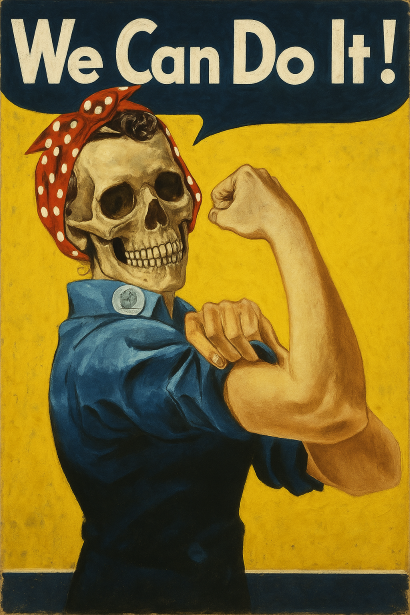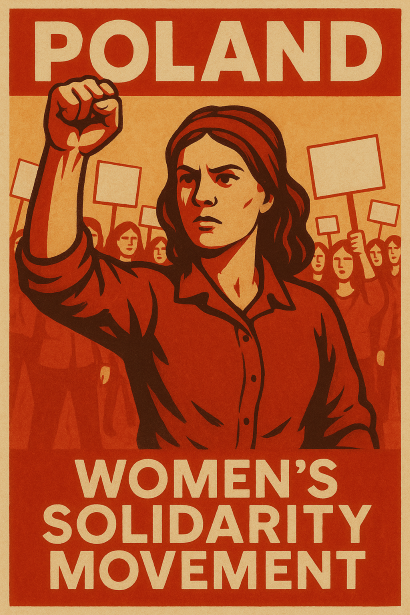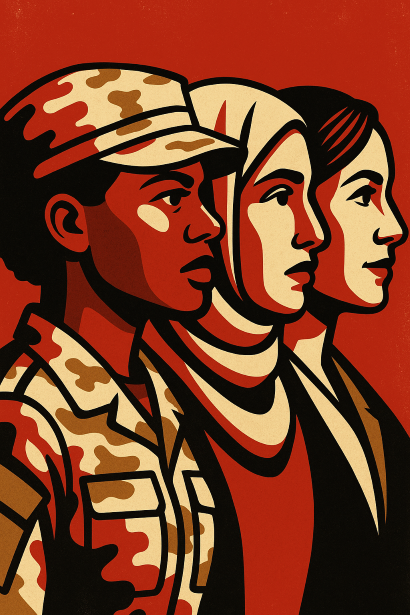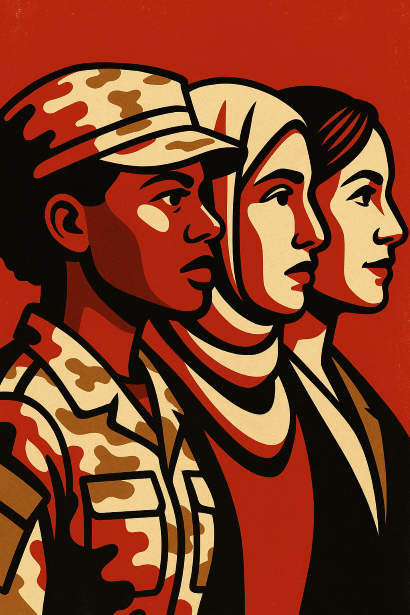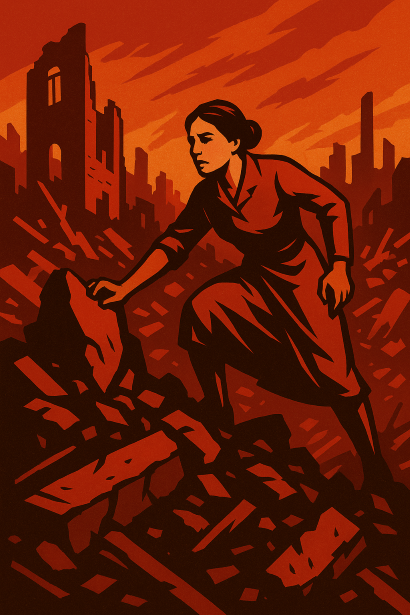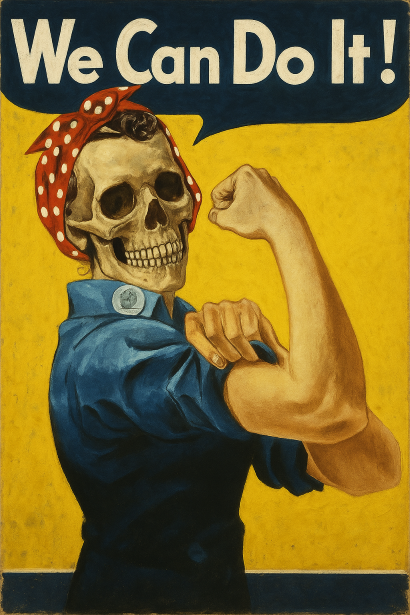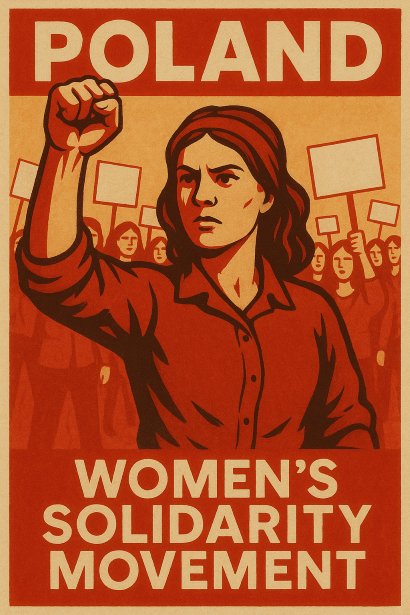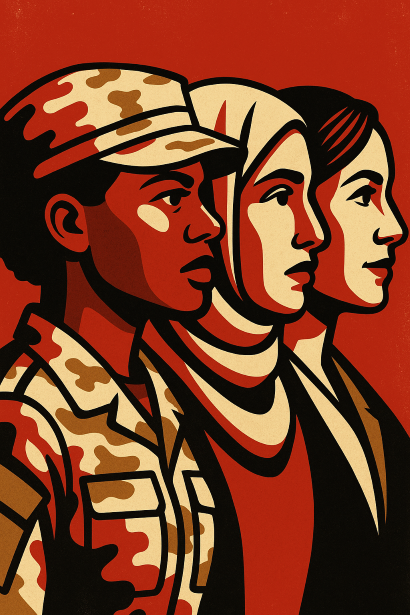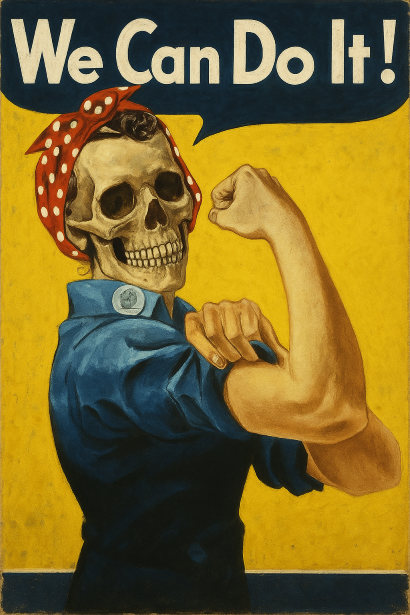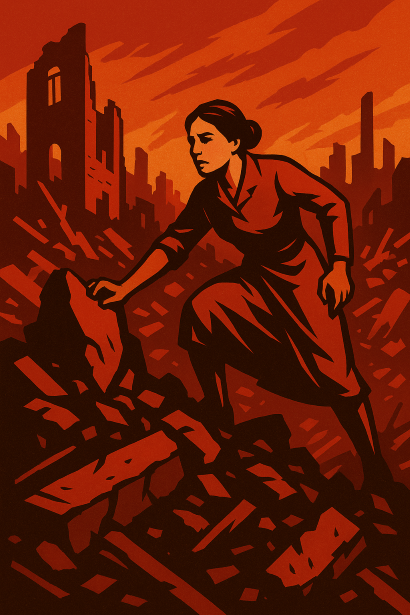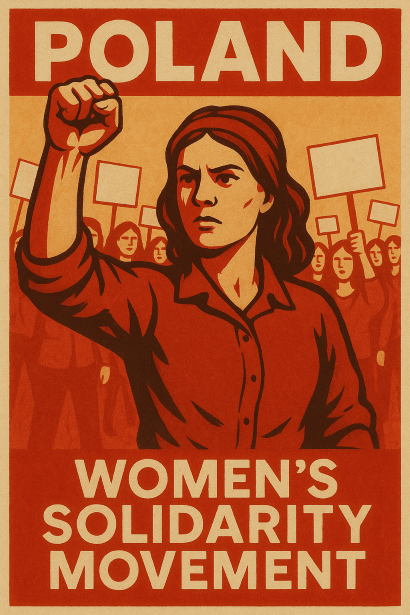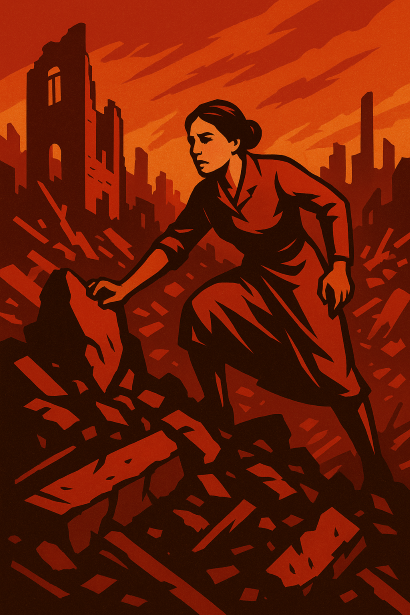
I’ve spent years studying how culture shapes economic and social outcomes, especially for women.
My work examines how individualistic, market-driven societies tend to foster more egalitarian views, boosting women’s education, workforce participation, and legal rights, as measured by the World Bank’s
Women, Business and the Law (WBL) index. So, when I turned my lens to war, a topic I’m no expert on, unlike my colleagues
Dr. Abigail Hall Blanco or
Dr. Christopher Coyne, I expected a grim story.
War’s a destroyer: lives lost, economies gutted by 17.5% of GDP (Costalli et al., 2017), societies upended. Surely, it’s terrible for women. Imagine my shock when I found data suggesting otherwise. Over the last 30 years and across over 165 countries, I noticed a strange pattern.
War, especially civil wars with foreign involvement, correlates with jumps in the WBL index, a measure of legal parity between men and women’s access to economic opportunities (scored between 0 to 100).
For example, Saudi Arabia’s score leapt from 32 in 2014 to 80 in 2020. These changes happened during an internationalized civil war that started in 2014. These
reforms align with
Saudi Vision 2030, launched in 2016 to diversify the economy and increase female workforce participation amid oil price pressures and war costs. A
European Parliament briefing notes that reforms in 2019 addressed some gender-discriminatory laws in Saudi Arabia, potentially influenced by global criticism of Saudi’s human rights record during the war with Yemen.
Similarly, the United Arab Emirates (UAE), in an internationalized civil war from 2009 to 2020, experienced similar changes in the WBL index, receiving a score of 27 in 2009 to a score of 82 in 2020. A
Financial Markets Group discussion paper details the sudden surge in UAE gender legal reforms as driven by economic diversification amid regional instability like the Yemen war. Underpinning these increases in the index for both Saudi Arabia and UAE were legal changes supporting women’s freedom of movement, rights to work, and equality of pay.
South Sudan, Uganda, Congo, and Angola also showed big improvements in legal gender parity post-war.
What’s going on here? War brings violence, displacement, and economic ruin. Why does it also nudge legal rights for women forward? Is it external pressure from the World Bank, United Nations, or other development agencies? Governments needing women to work and pay taxes to rebuild shattered economies? Individual women acting as entrepreneurs in uncertain circumstances? Media coverage amplifying gender disparities? Maybe it’s all of these. To provide context to numbers, let’s explore what social scientists say, using a bit of price theory to unpack this puzzle.
Price theory, at its core, examines how changes in relative costs and benefits shape human behavior and decision-making. In my analysis, I apply this lens to war's impact on women's rights by considering how conflict alters the incentives for governments and societies. For instance, war's devastation—loss of male labor, economic collapse, and fiscal pressures—lowers the price of granting women legal economic rights, as excluding half the population becomes too costly for recovery. It's a rational response to shifted incentives, where the benefits of women's workforce participation outweigh traditional patriarchal norms. By framing war as a shock that recalibrates these trade-offs, price theory helps explain why we see jumps in metrics like the WBL index, even amid chaos.
Women often bear a heavy burden from heightened risks of assault (Cohen, 2013) to economic strain in female-headed households (Buvinic et al., 2013). Yet, social scientists have noticed something curious: war’s chaos can disrupt entrenched gender roles for women, creating new economic opportunities. Anthropologist Cynthia Enloe (2014) emphasizes women’s active role in conflicts, as combat fighters, nurses, and community organizers, though their contributions are often sidelined post-war. Sociologists, such as Jean Bethke Elshtain (1995), document how war thrusts women into new roles, from World War II factory workers to community leaders in modern conflicts. Economists, like Claudia Goldin (1991), show that war-driven labor shortages propel women into the workforce, though gains can be fleeting (Acemoglu et al., 2004).
Recent work by Ingrid Bakken and Halvard Buhaug (2021) shows civil wars boosting women’s labor and political roles, as they fill gaps left by men. War’s a wrecking ball, but it can clear space for women to act, innovate, and lead.
War’s social impact often stems from a demographic shock: the loss of men. Young adult males, typically the primary combatants, face high mortality, creating a gender imbalance. This “missing men” effect turns things upside down. Women expand their roles as providers, decision-makers, and public figures, challenging patriarchal structures. In World War II, U.S. women filled factory jobs, reshaping labor markets. In post-genocide Rwanda, women formed cooperatives and have since claimed over half of parliament. In other civil wars, women’s economic and political roles expand as women substitute for absent men.
In Rwanda, women took on traditionally male jobs like farming, blurring gender lines. Aili Mari Tripp (2015) observes that Sub-Saharan African post-conflict states show less rigid gender divisions, as women’s wartime contributions gain greater recognition and legitimacy. In Haiti and Liberia, transitional governments introduced female police staffing, reflecting new norms (World Bank, 2011). Sirianne Dahlum and Tore Wig (2020) add a twist: empowered women reduce future conflict, suggesting war’s gender shifts could stabilize societies.
This shift isn’t inevitable. War’s economic devastation forces societies to adapt. Women’s entry into labor markets or politics often arises from necessity, not altruism. Yet, necessity can erode rigid laws and norms. War’s disruption raises the cost of not letting women work or start a business. Elites often realize they can’t afford to exclude half the population from economic roles. Chaos can be a strange ally of freedom.
War’s economic devastation forces those in charge to rethink who gets to contribute and how they can contribute. War exposes the inefficiency of excluding half the population, lowering the cost of reform. Women, often excluded, become essential. Governments need tax revenue, and barring half the population from work is bad for recovery. Thus, war prompts legal changes for women’s economic rights, as governments prioritize revenue over tradition. Countries experiencing civil wars, particularly those with foreign troops involved, often loosen legal restrictions on women’s ability to work and contribute to the economy.
Make no mistake. This isn’t about enlightenment; it’s about economics. When incentives shift in wartime, women’s potential contributions are much harder to ignore. Politicians, facing war’s fiscal demands, find it advantageous to unleash women’s additional productivity.
Let’s not kid ourselves—war’s no feminist utopia. It spikes violence against women, as weak post-conflict institutions falter (United Nations, 2022). Education often takes a hit with girls pulled from schools for safety (Chamarbagwala & Moran, 2011). Property losses hit women harder, especially where legal rights are shaky (Brück & Schindler, 2009). Cultural attitudes and legal rights don’t always move in lockstep. While economic incentives from war may spur legal changes in women’s rights, deeply rooted norms often persist, slowing broader social transformation. Post-war, entrenched interests try to push women back to “traditional” roles, as seen in the U.S. after WWII, as policies favored male veterans. Dino Hadzic and Margit Tavits (2020) show that in Bosnia, wartime violence increased female candidacy but not election rates, indicating cultural pushback. War’s disruption, while potent, faces limits when entrenched interests reassert control.
An additional, but not mutually exclusive explanation, is that the World Bank and other development agencies are tying development/conflict aid to gender reforms (UNWomen, 2015). Internationalized wars, under global scrutiny, might amplify the role of development agencies. Paulina Pospieszna (2015) shows that post-conflict democracy aid in Bosnia and Herzegovina pushed for women’s political empowerment. This suggests that WBL changes could simply be the result of agencies like the World Bank essentially paying for legal reforms in fragile, conflict-affected settings. For instance, the
World Bank's Gender Strategy 2024-2030 explicitly supports legal reforms to accelerate gender equality, including in post-conflict countries, by financing initiatives to remove barriers to women's economic opportunities and human capital development.
Yet, do these reforms stick? I'm skeptical. While de jure changes—like reformed laws on work equality or mobility—might look impressive on paper and boost WBL scores, they may not translate to de facto improvements on the ground. Externally funded reforms often fail to address deep-rooted cultural norms or institutional weaknesses, leading to superficial changes that don't empower women in practice. If reforms are bought with aid dollars rather than driven by local demand, they risk fading once the money dries up, leaving women with symbolic rights but no real shift in daily realities. It's a reminder that top-down incentives, even well-intentioned, might not endure without grassroots buy-in.
War’s role as a potential social catalyst underscores liberty’s core principle: real change emerges from individual action amidst disruption. Women, thrust into new roles by war’s necessity, demonstrate remarkable agency. Individuals, not governments, are the real engines of change. In conflict zones, women don’t wait for permission; they seize the moment, embodying the entrepreneurial drive that Israel Kirzner celebrated, spotting and pursuing opportunities even in crisis.
For these new freedoms to endure, they must grow from the ground up. While top-down legal mandates from local governments during wartime can take hold because of necessity, those planted by foreign aid agencies are different. External mandates, tied to conditional funding from bodies like the World Bank or UN, often feel imported and detached from grassroots realities, lacking the organic buy-in that makes reforms resilient. They risk withering once the aid fades. Post-war policies should instead focus on cultivating women’s economic and property rights by removing barriers, not layering on mandates. Ultimately, to preserve war’s unintended benefits perennially, we need to empower women to cultivate their own paths in society.
War can ignite meaningful social change by burning down patriarchal barriers. In their ashes, new liberties can be built.
References
Acemoglu, D., Autor, D. H., & Lyle, D. (2004). Women, War, and Wages: The Effect of Female Labor Supply on the Wage Structure at Midcentury. Journal of Political Economy, 112(3), 497–551.
Bakken, I. V., & Buhaug, H. (2021). Civil War and Female Empowerment. Journal of Conflict Resolution, 65(5), 982–1009.
Brück, T., & Schindler, K. (2009). The Impact of Violent Conflicts on Households: What We Know and What Should We Know about War Widows? Oxford Development Studies, 37(3), 289–309.
Buvinic, M., Das Gupta, M., Casabonne, U., & Verwimp, P. (2013). Violent conflict and gender inequality: An overview. The World Bank Research Observer, 28(1), 110-138.
Chamarbagwala, R., & Morán, H. E. (2011). The Human Capital Consequences of Civil War: Evidence from Guatemala. Journal of Development Economics, 94(1), 41–61.
Cohen, D. K. (2013). Explaining Rape during Civil War: Cross-National Evidence (1980–2009). American Political Science Review, 107(3), 461–477.
Costalli, S., Moretti, L., & Pischedda, C. (2017). The Economic Costs of Civil War: Synthetic Counterfactual Evidence and the Effects of Ethnic Fractionalization. Journal of Peace Research, 54(1), 80–98.
Dahlum, S., & Wig, T. (2020). Peace Above the Glass Ceiling: The Historical Relationship Between Female Political Empowerment and Civil Conflict. International Studies Quarterly, 64(4), 879–893.
Elshtain, J. B. (1995). Women and War. University of Chicago Press.
Enloe, C. (2014). Bananas, Beaches and Bases: Making Feminist Sense of International Politics. University of California Press.
Goldin, C. (1991). The Role of World War II in the Rise of Women’s Employment. American Economic Review, 81(4), 741–756.
Hadzic, D., & Tavits, M. (2020). Wartime Violence and Post-War Women’s Representation. British Journal of Political Science, 51(3), 1024–1039.
Pospieszna, P. (2015). Democracy Assistance and Women’s Political Empowerment in Post-Conflict Countries. Democratization, 22(7), 1250–1272.
Tripp, A. M. (2015). Women and Power in Postconflict Africa. Cambridge University Press.
United Nations. (2022). Office of the High Commissioner for Human Rights. United Nations.
UNWomen. (2015). A Global Study on the Implementation of United Nations Security Council Resolution 1325.
World Bank. (2011). World Development Report 2011: Conflict, Security and Development. World Bank.
 I’ve spent years studying how culture shapes economic and social outcomes, especially for women. My work examines how individualistic, market-driven societies tend to foster more egalitarian views, boosting women’s education, workforce participation, and legal rights, as measured by the World Bank’s Women, Business and the Law (WBL) index. So, when I turned my lens to war, a topic I’m no expert on, unlike my colleagues Dr. Abigail Hall Blanco or Dr. Christopher Coyne, I expected a grim story.
I’ve spent years studying how culture shapes economic and social outcomes, especially for women. My work examines how individualistic, market-driven societies tend to foster more egalitarian views, boosting women’s education, workforce participation, and legal rights, as measured by the World Bank’s Women, Business and the Law (WBL) index. So, when I turned my lens to war, a topic I’m no expert on, unlike my colleagues Dr. Abigail Hall Blanco or Dr. Christopher Coyne, I expected a grim story.